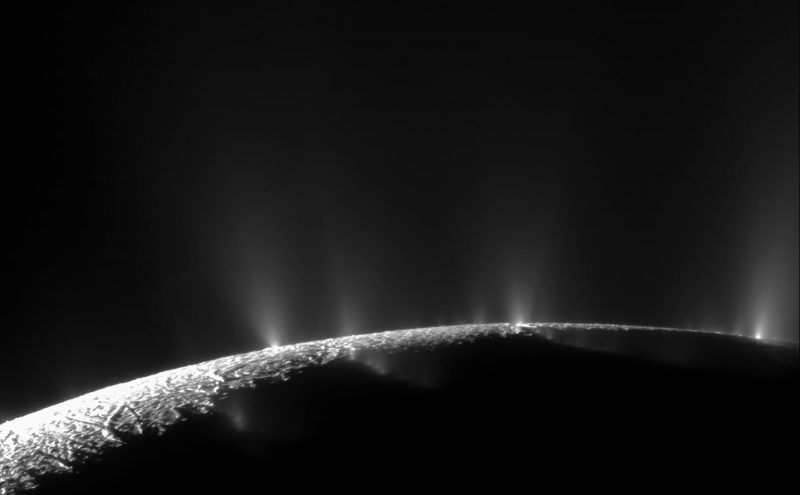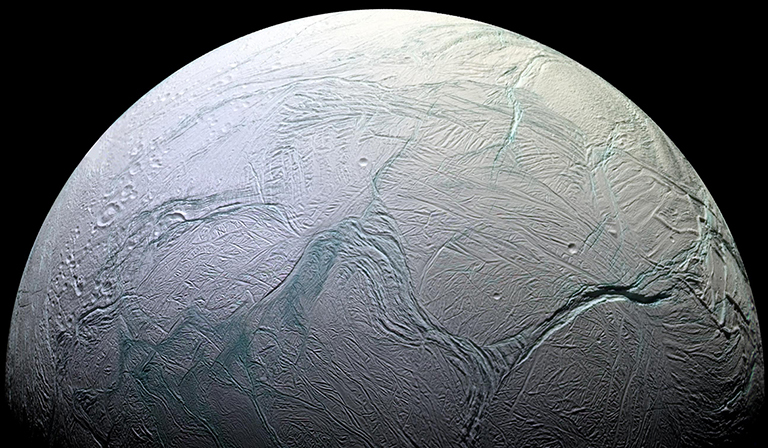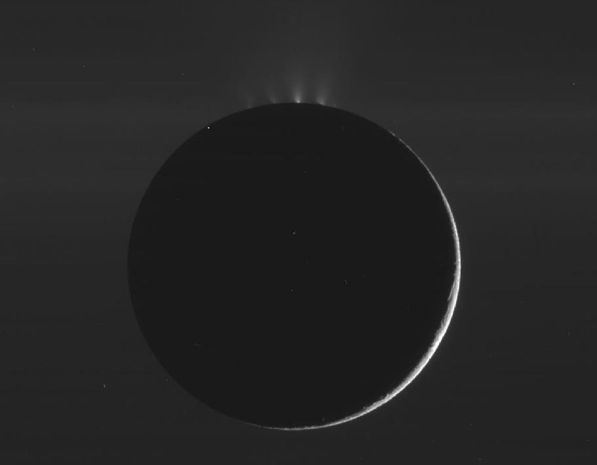
There was exciting news last week about Saturn’s fascinating moon Enceladus, a geologically active world that sprays water-ice particles, water vapor and organic compounds from fissures on its surface. On November 6, 2017, European and U.S. researchers announced results from a new modeling study, which might solve a decade-old puzzle about what keeps this little outer solar system moon active, as opposed to just freezing solid. The study showed that – if this moon has a highly porous core – heat from friction could power its hydrothermal activity for billions of years. Then on November 9 – during the New Space Age conference at Seattle’s Museum of Flight – Russian billionaire Yuri Milner described a vision to send the first privately funded interplanetary space mission to look for life at Enceladus.


New mission? Yuri Milner is known for his financial support of the search for life beyond Earth, via Breakthrough Listen (a search using radio telescopes) and Breakthrough Starshot (a plan to send swarms of nano-spacecraft through the star system next door, Alpha Centauri).
The latest twist, as reported by Alan Boyle (@b0yle on Twitter) in Geekwire on November 9:
…is a plan to bring the search for life beyond Earth closer to home. In the past, astrobiologists have speculated that microbial life could lurk far below the surface of Mars, or beneath a miles-thick layer of ice on Europa, one of Jupiter’s moons.
But, Milner said at the conference:
…the most promising recent candidate is Enceladus, one of the moons of Saturn.
As reported by Boyle, Milner said at the conference that he and others – including Carolyn Porco (on Twitter @CarolynPorco), who headed NASA’s imaging team for Cassini mission – formed “a little workshop” around the idea of a private space mission to Enceladus. Milner asked:
Can we design a low-cost, privately funded mission to Enceladus which can be launched relatively soon, and that can look more thoroughly at [the plumes of water-ice particles, water vapor and organic compounds spewing from Enceladus], to try to see what’s going on there?
Milner told GeekWire that he’s unsure of a timeframe for a private mission, but hopefully it could happen sooner than missions being considered by NASA or ESA, including ELF, ELSAH and E2T.
He indicated to Geekwire he is considering funding a feasibility study for a private mission to Enceladus.


New insights. The new study about Enceladus’ interior uses data from the Cassini spacecraft – whose mission to Saturn lasted from 2004 to September, 2017 – and is based on computer modeling. The study was published a couple of days before the New Space Age conference, on November 6, in the peer-reviewed journal Nature Astronomy. The researchers said in a statement that their study helps resolve a question they’ve grappled with for a decade, since Cassini discovered active geysers on Enceladus.
That is, where does the energy to power the extraordinary geologic activity on Enceladus come from?
Researchers believe that the temperature inside Enceladus – a tiny world, only 300 miles (500 km) across, in the cold outer solar system – must be at least 194 degrees Fahrenheit (90 degrees Celsius). But what keeps the interior of the moon so warm?
The amount of energy required to produce these temperatures is more than scientists think could be provided by decay of radioactive elements in the interior. Gaël Choblet of the University of Nantes in France, who led the new study, said:
Where Enceladus gets the sustained power to remain active has always been a bit of a mystery, but we’ve now considered in greater detail how the structure and composition of the moon’s rocky core could play a key role in generating the necessary energy.
According to the researchers’ statement:
Choblet and co-authors found that a loose, rocky core with 20 to 30 percent empty space would do the trick. Their simulations show that as Enceladus orbits Saturn, rocks in the porous core flex and rub together, generating heat. The loose interior also allows water from the ocean to percolate deep down, where it heats up, then rises, interacting chemically with the rocks. The models show this activity should be at a maximum at the moon’s poles. Plumes of the warm, mineral-laden water gush from the seafloor and travel upward, thinning the moon’s ice shell from beneath to only half a mile to 3 miles (1 to 5 km) at the south pole. (The average global thickness of the ice is thought to be about 12 to 16 miles, or 20 to 25 km.) And this same water is then expelled into space through fractures in the ice.
NASA’s Cassini Project Scientist Linda Spilker at the agency’s Jet Propulsion Laboratory in Pasadena, California commented:
This powerful research makes use of newer details — namely that the ocean is global and has hydrothermal activity — that we just didn’t have until the past couple of years. It’s an insight that the mission needed time to build, one discovery upon another.
Cassini ended its journey with a dramatic plunge into Saturn’s atmosphere this past September 15. Although space researchers will be analyzing its data for years to come, it’s clear they’re already itching to go back to Saturn!
Read more about the new study of Enceladus’ interior via NASA
The video below provides a brief overview of Enceladus and includes information from Cassini’s final flyby of the moon:
Bottom line: A study suggests Enceladus’ geologic activity can be maintained over billions of years if the moon’s interior is porous. In Seattle, space visionaries including Yuri Milner discussed a return to Saturn and its moon Enceladus via a private space mission.











